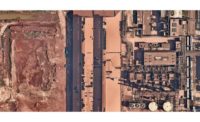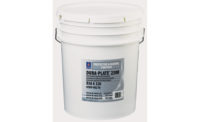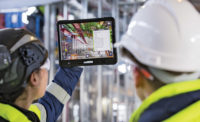As consumer drones have gained sophistication and professional drones have come down in price, features previously limited to high-end devices are finding their way onto ever more affordable unmanned aerial vehicles.
The latest example is Parrot’s ANAFI Thermal, a professional version of the consumer-grade ANAFI drone introduced in mid-2018. In addition to the gimbal-mounted 4K HDR camera on the $700 consumer model, the pro model also packs a 1080p FLIR camera for thermal imaging, in a quadcopter with a suggested retail price of $1,900.
“We see ANAFI as a platform we can build on” explains Fabien Laxague, public relations manager for Parrot. “Now it’s matured, the software is improved, we feel ready to launch the professional product.”
The compact drone, which folds up for transport, weighs 315 grams (about 11.1 oz) and has a runtime of 26 minutes for each of the three changeable batteries it comes with. Flights are planned and controlled with the same FreeFlight 6 smartphone and tablet software used by the consumer-grade version.
Getting an integrated thermal camera onto the bird was a goal for the pro model, says Martin Liné, head of user experience at Parrot. “We have these images with two layers, the thermal layer and the visible layer,” he says, explaining that the thermal view can be turned off, which lets users navigate in normal view and review the thermal imaging video later. “We worked with an energy company in France to check on solar panels and electric lines. This let them quickly find if there was a problem,” Liné says.
Liné says the ANAFI Thermal was also designed with a compact form and modest price so utilities or contractors could keep one in every truck, rather than hire out inspection work to drone consultants operating more expensive UAVs. “If you’re doing a bridge inspection you can just set up the ANAFI and go,” he says.
The UAV’s cameras are stabilized on three axes and can tilt through 180º, giving it the ability to record still or video images directly below or directly above the aircraft. Files are stored on the drone’s SD card and additional image processing is handled by the Pix 4D app, which is a paid processing and photogrammetry service. The Pix 4D can process the files and return to the operator 3D models of sites filmed during the drone’s flights.







Post a comment to this article
Report Abusive Comment